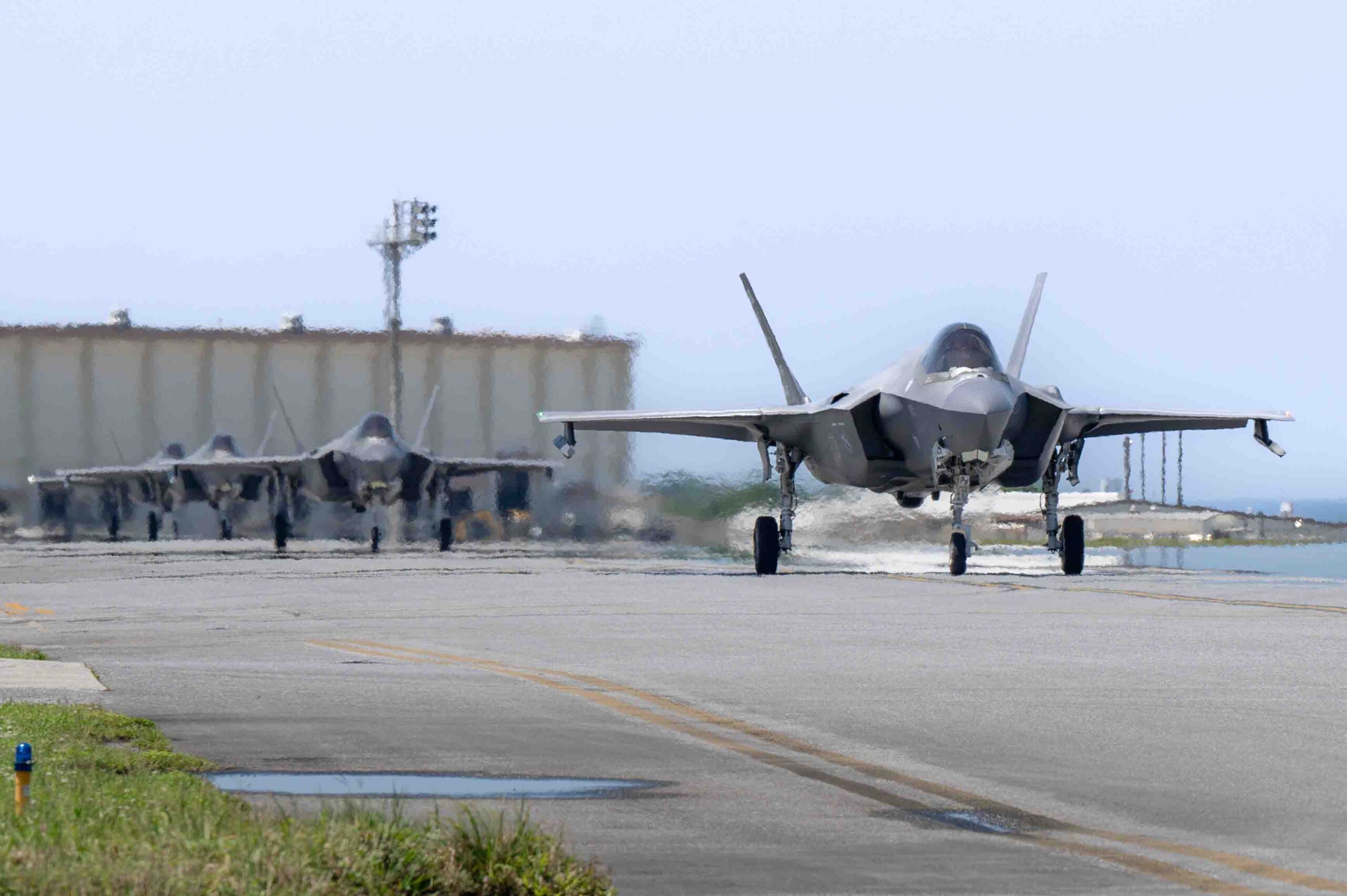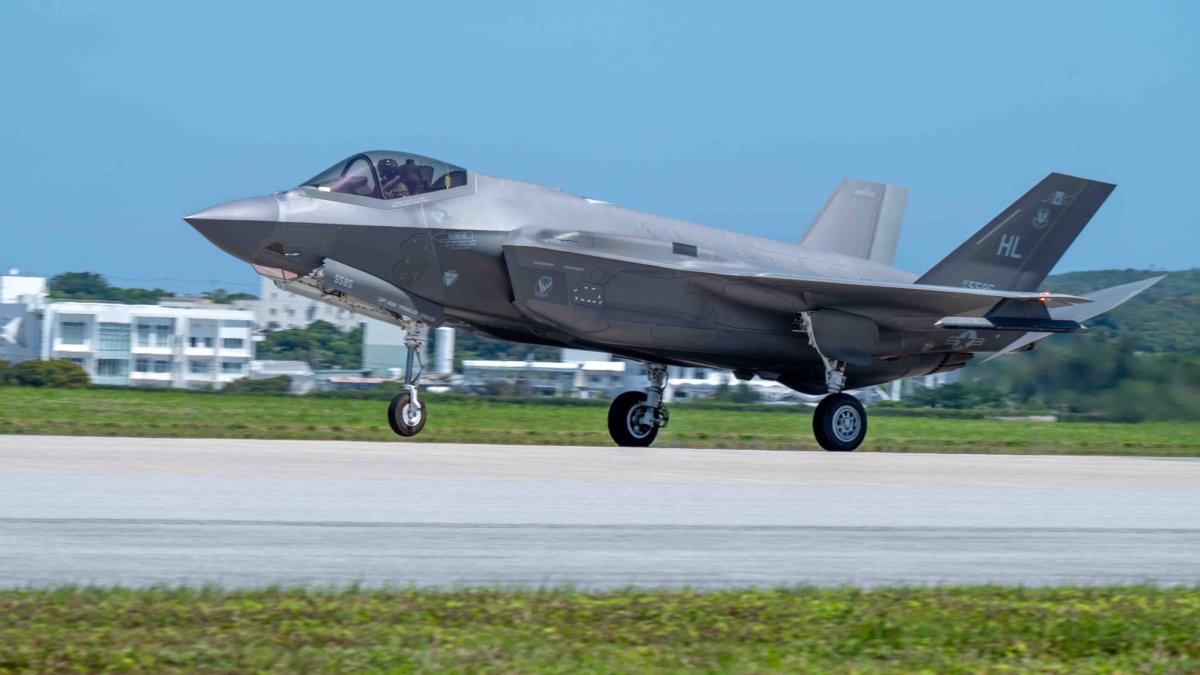
The United States has dispatched a second group of stealth fighter jets to Kadena Air Base in Japan, reinforcing its air power to counter China in the contested western Pacific Ocean.
Newsweek has contacted the Chinese Defense Ministry for comment by email.
Why It Matters
Kadena Air Base, located on the island of Okinawa, is the closest U.S. air base to Taiwan, with a distance of 370 miles. China has long threatened to use force against the self-ruled island of Taiwan, claiming it is part of Beijing’s territory, despite having never governed it.
Under a U.S. maritime containment strategy, Japan, a key treaty ally of Washington, formed the first island chain with Taiwan and the Philippines, which seeks to restrict the Chinese military’s access to the Pacific Ocean, in addition to the second and third island chains.
The U.S. Air Force is replacing Kadena Air Base’s fleet of the older F-15C/D Eagle jets with the state-of-the-art F-15EX Eagle II jets, which are expected to arrive in 2026. During the air power transition period, Kadena Air Base maintains a rotational presence of fighter aircraft.
What To Know
The U.S. Air Force 18th Wing, which is the host unit for Kadena Air Base, announced in a news release that an unknown number of the F-35A Lightning II fighter aircraft, which are assigned to the 421st Expeditionary Fighter Squadron, arrived at the base on Thursday.
Airman 1st Class Arnet Tamayo/U.S. Air Force
The squadron, nicknamed “Black Widows,” was originally stationed at Hill Air Force Base in Utah. It is the second F-35A fighter aircraft unit to be deployed at Kadena Air Base after the 355th Expeditionary Fighter Squadron, a unit based at Eielson Air Force Base in Alaska.
The Alaska-based F-35A fighter aircraft were deployed to Kadena Air Base from April 3 to 6 with the F-15E Strike Eagle fighter aircraft, which were sent by the 336th Expeditionary Fighter Squadron, a unit stationed at Seymour Johnson Air Force Base in North Carolina.
The arrival of the Utah-based F-35A fighter jets completed the latest round of fighter aircraft deployments to the Pacific Ocean, the news release said, adding that the continuous rotations of aircraft at Kadena Air Base ensured a “lethal and credible” air power to deter aggression.
According to the U.S. Air Force, the F-35A is its latest fifth-generation fighter jet, providing next-generation stealth, enhanced situational awareness and reduced vulnerability. Japan is also an operator of this type of stealth fighter aircraft and has ordered a total of 105 jets.

Airman 1st Class Arnet Tamayo/U.S. Air Force
The two sister variants of the F-35A fighter aircraft, the U.S. Marine Corps’ F-35B and the U.S. Navy’s F-35C, are also deployed in Japan as part of the U.S. forces protecting the ally. They are stationed at the city of Iwakuni on Honshu, one of the four main islands of Japan.
What People Are Saying
The U.S. Air Force 18th Wing said: “Modernizing capabilities in the Indo-Pacific theater remains a top priority. Kadena aircraft rotations exemplify the [Department of Defense’s] continued commitment to maintain a continuous fighter presence while awaiting the arrival of the F-15EX.”
U.S. Air Force Lieutenant Colonel Bryan Mussler, the commander of the 421st Expeditionary Fighter Squadron, said: “The Black Widows are thrilled to be back and flying with our allies and partners here at Kadena. Our unit values the distinctive training opportunities afforded by our deployment to the Indo-Pacific and is eager to contribute to the mission.”
What Happens Next
It remains to be seen whether the U.S. military will send additional assets to Japan. Last month, President Donald Trump questioned the U.S.’s commitment to the security of its ally.
